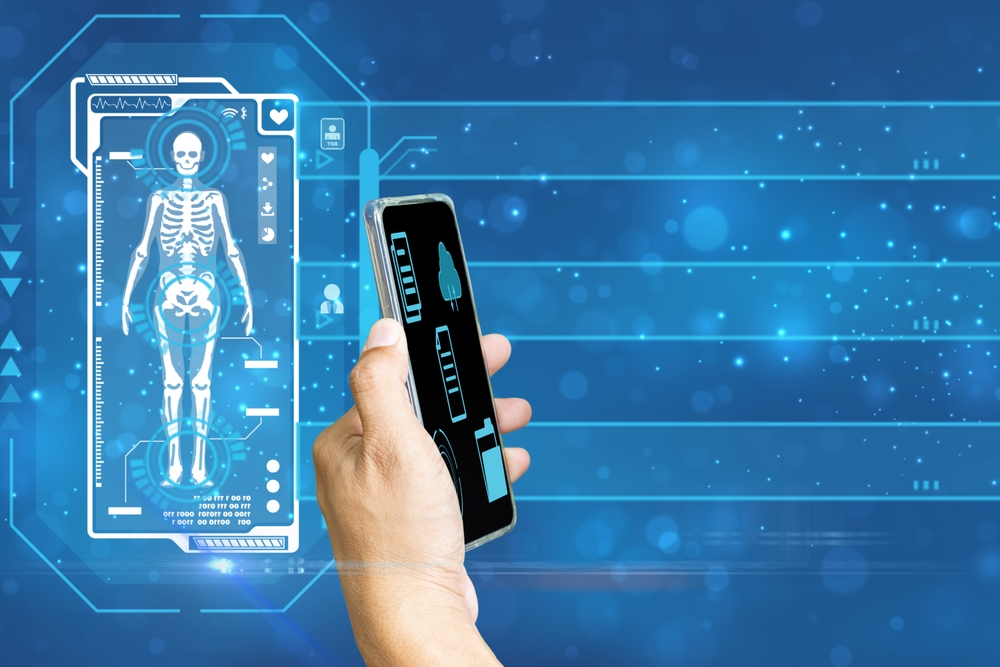
In a pioneering study at Beth Israel Deaconess Medical Center (BIDMC), physician-investigators have embarked on a groundbreaking exploration at the crossroads of artificial intelligence (AI) and the intricate landscape of medical decision-making. Published in JAMA Network Open, the research sheds light on the potential role of AI, specifically the Large Language Model (LLM) known as Chat GPT-4, as a transformative clinical decision support tool for physicians, offering a glimpse into a future where diagnostic processes are optimized through technological collaboration.
Understanding the Challenge: Human Complexities and Probabilistic Reasoning
Dr. Adam Rodman, the study’s corresponding author and an internal medicine physician at BIDMC, emphasized the inherent challenges humans face in probabilistic reasoning. This cognitive process, integral to medical decision-making, involves intricate calculations of odds. The complexity of diagnosing medical conditions, encompassing diverse cognitive strategies, prompted the research team to narrow their focus to probabilistic reasoning. Dr. Rodman’s insight into this specific cognitive domain underscores its critical nature and potential for enhancement through technological intervention.
The Study Design: A Comparative Analysis
Drawing insights from a comprehensive national survey involving over 550 practitioners engaged in probabilistic reasoning on various medical cases, the researchers designed a study to subject Chat GPT-4 to the same diagnostic scenarios. The chatbot, akin to its human counterparts, was tasked with estimating the likelihood of a given diagnosis based on patient presentations and underwent a battery of simulated tests, including chest radiography for pneumonia, mammography for breast cancer, stress tests for coronary artery disease, and urine culture for urinary tract infection.
Results and Insights: A Nuanced Performance Evaluation
The outcomes of the study presented a nuanced comparison of performance between the chatbot and human practitioners. In cases where test results were positive, the chatbot demonstrated equal or superior accuracy in diagnosing medical conditions in four out of five scenarios. However, the chatbot’s true prowess emerged when confronted with negative test results—it consistently outperformed human practitioners in all five cases. Dr. Rodman underscored the human tendency to overestimate risk post-negative test results, potentially leading to unnecessary interventions.
Looking Forward: Seamless Integration into Clinical Workflows
While acknowledging the imperfections of Large Language Models (LLMs) and their inability to access external information like traditional epidemiologists, Dr. Rodman remains optimistic about the transformative potential of AI in clinical decision-making. Despite their imperfections, the ease of use and seamless integration of AI into clinical workflows could empower physicians to make more informed decisions. The study not only highlights the immediate implications for diagnostic accuracy but also points towards the broader potential of AI integration in the intricate fabric of healthcare processes.
Call for Further Exploration: Navigating the Landscape of Collective Intelligence
As the study at Beth Israel Deaconess Medical Center (BIDMC) unfolds the promising role of artificial intelligence (AI) in medical decision-making, Dr. Adam Rodman, the corresponding author, propels the conversation forward, emphasizing the imperative need for sustained exploration into the realm of collective intelligence shared between humans and AI.
In unveiling the potential of collaborative synergy, the groundwork is laid for potential AI integration into the intricate fabric of medical decision-making. Dr. Rodman sheds light on the transformative potential that arises from the collaboration of human expertise and AI capabilities. Envisioning a future where this synergy transcends current boundaries, he foresees heightened diagnostic accuracy and a paradigm shift towards more informed medical decisions.

Dr. Rodman’s emphasis on ongoing research serves as a rallying call for the scientific community to delve deeper into the complexities of collective intelligence. The evolving relationship between human practitioners and AI technologies demands continuous exploration to uncover nuances, optimize integration, and address potential challenges. This commitment to research becomes the compass guiding the exploration of uncharted territories in the intersection of human and artificial intelligence.
In envisioning the future, Dr. Rodman paints a picture where the collaborative synergy between human intuition and AI capabilities becomes a cornerstone for advancing healthcare practices. This vision transcends the current landscape, offering a glimpse into a healthcare ecosystem where diagnostic accuracy reaches unprecedented levels, and medical decisions are informed by the harmonious interplay of human judgment and AI-driven insights.
While navigating this uncharted landscape of collective intelligence, Dr. Rodman acknowledges the challenges that lie ahead. The complexities of integrating AI into the intricate realm of healthcare decision-making demand a nuanced approach. Ethical considerations, data privacy, and ensuring a seamless integration that complements rather than replaces human expertise are among the multifaceted challenges that require careful navigation.
As the dialogue around collective intelligence gains momentum, healthcare professionals find themselves at the forefront of a transformative era. Embracing AI as a collaborative partner requires an evolution in roles and responsibilities. The traditional boundaries of medical practice expand to encompass a new era where practitioners and AI collaborate synergistically, each contributing unique strengths to enhance patient care and outcomes.
In conclusion, Dr. Rodman’s call for ongoing research and exploration into collective intelligence serves as a testament to the evolving landscape of healthcare. The integration of AI into medical decision-making is not merely a technological advancement but a paradigm shift that necessitates continuous inquiry, adaptation, and refinement. As we navigate this uncharted territory, the collaborative dance between human expertise and AI capabilities holds the promise of reshaping healthcare practices, ushering in an era of precision medicine and optimal patient outcomes. This journey towards collective intelligence stands as a landmark in the ongoing technological evolution, a journey where the intersection of humanity and artificial intelligence paves the way for a brighter and more informed future in healthcare.
Conclusion: Bridging Technological Advancements with Human Expertise
In conclusion, the study signifies a significant leap towards harnessing the potential of AI, specifically in the realm of probabilistic reasoning, to augment and refine human decision-making in healthcare. The promising performance of Chat GPT-4 in diagnostic scenarios, coupled with its seamless integration into clinical workflows, not only opens avenues for improved diagnostic accuracy but also sets the stage for more judicious medical interventions. As researchers delve deeper into the realms of collective human and AI intelligence, the envisioned future holds transformative possibilities, where the collaborative synergy between human intuition and AI capabilities becomes a cornerstone for advancing healthcare practices and optimizing patient care. This research stands as a testament to the ongoing evolution of medical decision-making, where technological advancements converge with human expertise for the betterment of healthcare outcomes.
